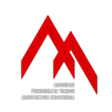Perbedaan Kegiatan Penghuni di Ruang Makan dengan Ruangan lain berdasarkan ketersediaan Ruang Makan pada Hunian
DOI:
https://doi.org/10.21776/ub.ruas.2021.019.02.10Keywords:
affordance, eating activity, dining room, behaviourAbstract
The existence of a dining room is now rarely found in some residences. Some people who do not have a dining room will be forced to use a room to carry out eating activities. In comparison, other people use the dining room to do other activities. It shows that the existence of space reflects the behaviour of the occupants in living. This study will compare community activities with residential conditions with a dining room and those without a dining room. This study aims to reveal the differences and activities most often carried out in the two conditions. Then all these activities will be classified based on the theory of affordance. This research method uses a sequential mixed-method approach by distributing online questionnaires. The data collected were analyzed using principal component analysis and analysis of the mean latent variables to find the most dominant variable. Based on the study results, the most dominant activity carried out in residential areas that have a dining room is only eating activities. Meanwhile, residential areas that do not have a dining room include learning, working, relaxing and household activities.
Â
References
Cahyaningtyas, A. D., dan Rahardjo, S. 2016. Penggunaan konsep space saving untuk apartemen tipe studio di Kota Bandung. Jurnal IDEALOG: Jurnal Desain Interior & Desain Produk, Vol. 1, No. 2.
Creswell, J. 1998. Qualitative Inquiry and Research Design: Choosing among Five Tradition. London: Sage Publications.
Creswell, J. W. 2008. Research Design: Qualitative, Quantitative, and Mixed Methods Approaches. California: Sage Publications, Inc.
Creswell, J. W. 2012. Educational research: Planning, Conducting, and Evaluating Quantitative and Qualitative Research (4th ed.). Boston: M.A. Pearson.
Funo, Shuji. 2007. Typology of Kampung Houses and Their Transformation Process- A Study on Urban Issues of an Indonesian City. Journal of Asian Architecture and Building Engineering, Vol. 1, No. 2.
Gaver, William W. 1991. Technology Affordances. In: Robertson, Scott P., Olson, Gary M. and Olson, Judith S. (eds.) Proceedings of the ACM CHI 91 Human Factors in Computing Systems Conference, (pp. 79-84).
Gibson, James J. 1977. The theory of affordances. In: Shaw, Robert and Bransford, John (eds.). â€Perceiving, Acting and Knowingâ€. Hillsdale, USA: Lawrence Erlbaum.
Grimm, L.G., and Yarnold, P.R. (1995) Reading and understanding multivariate statistics. Washington, D.C.: American Psychological Association.
Groat, L., & Wang, D. 2001. Architectural Research Methods. New York: John Wiley & Sons. Inc.
Kaiser, H.F. 1960. The application of electronic computers to factor analysis. Educational and Psychological Measurement, 20(1), 141–151.
Kaptelinin, V. 2014. Affordances and design. The interaction design foundation.
Kumar, R. 2005. Research Methodology Second Edition. London: SAGE publications.
Najib, M. 2006. Pola Tata Ruang dalam Rumah Tinggal Masyarakat Berpenghasilan Rendah di Kawasan Pusat Kota Palu. Majalah Ilmiah “MEKTEKâ€, Vol. VIII, No.2, (pp 113).
Putra, G. B., Ju, Seo R., & Soedarsono, W. (2016). Housing Activities in Contemporary Indonesian Dwellings. Journal of the Korean Housing Association, Vol. 27, No. 6, (pp. 65-75).
Rapoport, A. 1977. Human Aspects of Urban Form Towards a Man-Environment Approach. to Urban Form and Design, 1977, (p. 305).
Stevens, J.P. 1986. Applied multivariate statistics for the social sciences. Hillsdale, NJ: Erlbaum.
Tschumi, B. 1994. Architecture and Disjuction. England: MIT Press England.
Yamin, S. 2017. Perancangan Mebel Multifungsi untuk Apartemen Tipe Studio. Jurnal INTRA, Vol. 5, No. 2, (pp. 168-173).
Downloads
Published
How to Cite
Issue
Section
License
Authors who publish with this journal agree to the following terms:
- Authors retain copyright and grant the journal right of first publication with the work simultaneously licensed under a Creative Commons Attribution License that allows others to share the work with an acknowledgement of the work's authorship and initial publication in this journal.
- Authors are able to enter into separate, additional contractual arrangements for the non-exclusive distribution of the journal's published version of the work (e.g., post it to an institutional repository or publish it in a book), with an acknowledgement of its initial publication in this journal.
- Authors are permitted and encouraged to post their work online (e.g., in institutional repositories or on their website) prior to and during the submission process, as it can lead to productive exchanges, as well as earlier and greater citation of published work (See The Effect of Open Access).












